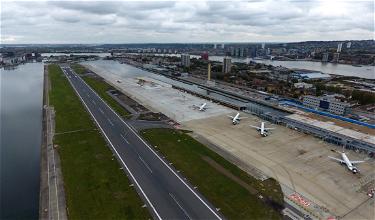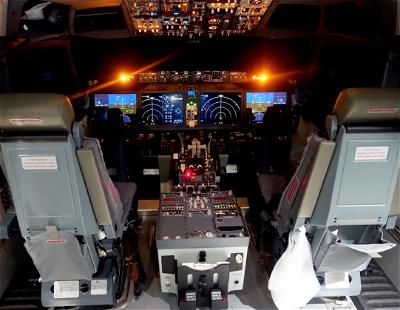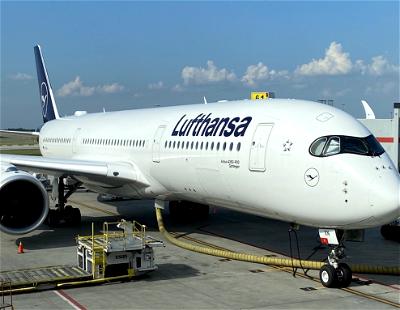London City Airport permanently switched to remote air traffic controllers several weeks ago, but we’re just now finding out…
In this post:
London City Airport’s remote controllers
London City Airport is the smallest of the “major” airports in London, and it’s located near Canary Wharf, and has historically been popular with business travelers (British Airways used to operate a direct flight from New York, but this has been a casualty of the pandemic). Pre-pandemic the airport served five million travelers per year.
London City Airport’s air traffic control tower is no longer staffed, as the airport has become the first major airport in the world to use a remote, digital air traffic control tower. This change was made earlier this year, but the airport only went public with the news on Friday.
Pilots now get takeoff and landing clearance from air traffic controllers who are 90 miles away from the airport in Swanwick, southwest of London. The benefit of this change is that it’s intended to improve efficiency, because the same number of controllers can deal with more plane movements thanks to better technology that gives them more data.
 British Airways’ former Club World London City plane
British Airways’ former Club World London City plane
How exactly does this work?
London City Airport has built a new tower that’s even taller than the previous air traffic control tower. However, rather than being for people, the tower has 16 high-definition cameras, each with multiple lenses:
- Each camera has a self-cleaning mechanism to stop debris and insects from blurring the lenses, and there are metal spikes to protect the cameras from birds
- The videos from the cameras show up on 14 screens, which provide a panoramic view of the runway
- The sounds at the airport are even broadcast, so that controllers can hear the sounds of engines, reverse thrust, touchdown, and more
- The new remote tower cost $28 million to build, and it’s claimed that this isn’t about saving money, but about being able to grow in a more efficient way; the idea dates back to an expansion plan initially revealed in 2016, which would have required changes to the air traffic control tower, and that’s where the concept of a remote tower came into play
- London City Airport’s chief operating officer insists that there’s always a backup if a link were lost, and claims that the new system is safer, because it provides air traffic controllers with more data
- The director of the UK’s National Air Traffic Services insists that all risks are well covered, including cybersecurity concerns
Other major airports are allegedly considering a remote tower as well, including London Heathrow Airport.
 Plane taking off at London City Airport
Plane taking off at London City Airport
Bottom line
London City Airport has become the first major airport to replace an air traffic control tower with a new remote concept. The airport now has a tower with 16 cameras that can give controllers the feeling of being at the airport, while actually being far away. Rather than looking out the windows, controllers will now be looking at screens.
It’s being claimed that there are no cybersecurity risks and that this is actually safer than a regular tower, thanks to the additional data that controllers have access to. Only time will tell if that’s actually the case.
What do you make of the concept of air traffic control at airports being remote?
(Tip of the hat to Simon)





"The benefit of this change is that it’s intended to improve efficiency, because the same number of controllers can deal with more plane movements thanks to better technology that gives them more data."
Does this mean same ATC people will be somehow handling more than one airport?
If not, what is the benefit of locating them 90 miles away? I see how cameras can provide more and better info to controllers - and...
"The benefit of this change is that it’s intended to improve efficiency, because the same number of controllers can deal with more plane movements thanks to better technology that gives them more data."
Does this mean same ATC people will be somehow handling more than one airport?
If not, what is the benefit of locating them 90 miles away? I see how cameras can provide more and better info to controllers - and maybe even use some AI - but why not put people in the airport - so that if something is to happen, they can go back to tower and direct traffic the old fashion way?
Sydney ATC is moving to Melbourne, 600 miles ( 1000k) away. I don’t believe it’s an issue.
The 737 was tested and engineered with redundant systems too....Just saying....
We flew into LCY from Dublin and I liked the experience far better than any other London airport (we have flown in or out of every one of them except Southside). No long lines to wait in and we were on the train in just a few minutes. My understanding is that there is no lounge, so wouldn't want to have to hang out long to fly out of there but I also understand you don't need to be there near as early, so I imagine we will try it at some point.
Here's the video that others have mentioned: https://www.youtube.com/watch?v=Ii_Gz1WbBGA
This was posted back in January 2018.
@xdc “attention Dulles tower” is a quote from Diehard 2”.
As already mentioned, this is hardly a new concept. The general aviation airport in Leesburg, VA (15 miles NW of Washington Dulles airport) introduced and has successfully operated a remote tower several years ago. The main difference is the tower controllers don't see aircraft on the runway directly with their own eyeballs.
@A ??? There are absolutely no plans for a remote tower at Dulles. The permanent facility for the remote tower at Leesburg only just recently went online after five years of testing.
@ Alan This IS a real controller looking out over an airfield, he/she is just doing so looking at screens instead of a tower cab window. They said the same thing about radar controllers decades ago...not only has my radar equipment never failed...
@A ??? There are absolutely no plans for a remote tower at Dulles. The permanent facility for the remote tower at Leesburg only just recently went online after five years of testing.
@ Alan This IS a real controller looking out over an airfield, he/she is just doing so looking at screens instead of a tower cab window. They said the same thing about radar controllers decades ago...not only has my radar equipment never failed on me, but it's never even been a concern. Nothing makes it out of the testing phase without having had every eventuality considered.
Given that the most important info & control data is passed over an open voice, unencrypted radio channel now, I don't think hacking the data links are the prime concern here.
Not new.
Not a "whoa"
Just normal.
Tom Scott had a good video about this a few years ago when they were training and preparing for this. One advantage they said was that if a plane was coming in and the sun is directly behind it at sunset/sunrise, they are no longer blinding themselves just trying to see the plane. Pretty remarkable.
Also if the videos go down, they treat it the same as a day with no visibility.
Haha, I just came to post the same thing as @A.
Ole +1
This has been planned for a number a years and the current timeline announced well over two years ago!
Remote towers have been used throughout Europe and the US (in Virginia) for several years now. Have you heard of any problems with those?
Cybersecurity concerns are the same as in a regular tower (they also use computers in there...) or any area control center who don't even have the option to look out the window (or do you think that controllers looking after a MIA-JFK flight do it with binoculars?).
Well, i don't doubt the safety and security of a remote control tower at all.... but still, i am not buying this.
It seems, at least throught this article, that the NATS sole argument for the extra safety of the tower is that of the "extra data" provided to the controllers.
But... wouldn't it be even safer and cheaper to keep the old tower and find another way to provide this extra date?...
Well, i don't doubt the safety and security of a remote control tower at all.... but still, i am not buying this.
It seems, at least throught this article, that the NATS sole argument for the extra safety of the tower is that of the "extra data" provided to the controllers.
But... wouldn't it be even safer and cheaper to keep the old tower and find another way to provide this extra date? Pretty sure this 28 million pound remote tower/control center isn't necessary for "extra data"
I don't know... something seems a little bit off to me.
Attention Dulles tower....
FYI, this has been extensively tested for YEARS and there's a cool video by Tom Scott on this technology which was also uploaded years ago. I know people doubt technology, but again, this has been in the works for a long time and proven to work.
@Alan It's not excatly viritual. It is still controlled by the same people, although now its done remotely and with more and improved technological assistance. Approach control didn't excatly get worse when we went from procedural to radar based service, and I don't see how it should be different in this case.
@HkCaGu Not necessarily. Most TWRs have backup equipment with which one is able to provide a "controlled shutdown" of the airspace and TWR,...
@Alan It's not excatly viritual. It is still controlled by the same people, although now its done remotely and with more and improved technological assistance. Approach control didn't excatly get worse when we went from procedural to radar based service, and I don't see how it should be different in this case.
@HkCaGu Not necessarily. Most TWRs have backup equipment with which one is able to provide a "controlled shutdown" of the airspace and TWR, which might turn out to be more difficult with a remote TWR. Even a handheld radio could provide assistance in that context - but that is restricted to the person using it being located very close to the airport as range is very limited.
A virtual air traffic control system will back fire some day. Nothing beats a real human looking out over the field from the control tower.
@Kosher: Anything physically terroristic would knock out the legacy communication infrastructure anyway. Having controllers there doesn’t necessarily mean they can talk to planes.
This is nothing new. This switch has been known for years, and is not only limited to EGLC.
Great idea until there is a natural disaster or terrorist event and power and backup systems down.